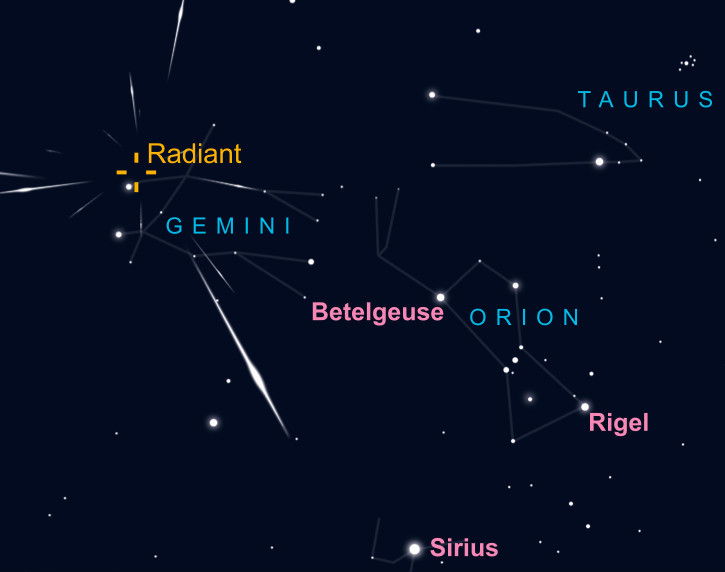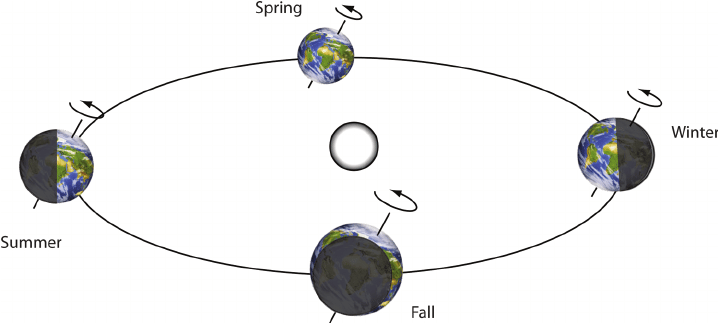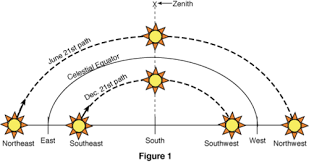THE SOUTHWORTH PLANETARIUM
70 Falmouth Street Portland, Maine 04103
(207) 780-4249 usm.maine.edu/planet
43.6667° N 70.2667° W
Altitude: 10 feet below sea level
Founded January 1970
2021-2022: LIII
"The mind that is anxious about the future is miserable."
-Seneca
THE DAILY ASTRONOMER
Monday, December 6, 2021
December 2021 Night Sky Calendar Part III
TUESDAY, DECEMBER 14, 2021: GEMINID METEOR SHOWER PEAKS
In order to discuss the Geminid meteor shower, we should first mention a remarkable little celestial body called 3200 Phaeton. Discovered in 1983, Phaeton is an Apollo asteroid, or one that crosses Earth's orbit.* Even by the standards of Apollo asteroids, it is highly unusual. Not only does it veer closer to the Sun than any named asteroids (13 million miles from the Sun, about 1/3 of Mercury's mean distance), but it might well be a "dead comet," or one that has depleted its surface ices so as to expose a rocky inner core. As this extinct comet approaches the Sun, the intense heat and solar pressure wicks away this core material, much as wind erodes desert sand. The detached particles form a tail reminiscent of a dust tail which follows in a comet's wake. These particles constitute the meteoroids responsible for the Geminid meteor shower. Consequently, the Geminid meteor shower 's parent body is asteroidal, not cometary. Almost all meteor showers originate from comets.
The Geminid meteor shower begins on December 4, ends on December 17th and peaks on December 14th. At peak, this shower produces about 80 bright, medium-speed meteors an hour. These meteors appear to originate within the constellation Gemini, hence the name. The graphic below shows the radiant's location close to Castor, the star representing the head of the northern twin of the same name.

The Geminid radiant is located within Gemini, the zodiacal constellation to the northeast of Orion. Image credit: Astronomy Now.
While one can watch for Geminid meteors throughout the night, it is best to watch after midnight, the time when our part of the planet is moving into the path of the meteoroid stream.
THURSDAY, DECEMBER 16: MOON NEAR PLEIADES STAR CLUSTER
The waxing gibbous moon (94% illuminated) appears close to the Pleiades Star Cluster, a galactic cluster within the constellation Taurus the Bull. Although the gibbous moon is quite bright, one will still be able to observe the Pleiades, or Seven Sisters, within the same vicinity.
SATURDAY, DECEMBER 18: FULL MOON
A micr0-moon! Ok, well, what is a "micro-moon?" A micro moon is a full moon that occurs when the moon is full around the time of apogee, the point of greatest distance in the moon's orbit. As the moon reached apogee yesterday, we can consider this full moon to be a micromoon.
TUESDAY, DECEMBER 21: WINTER SOLSTICE (GOLD EVENT!!!)
At 10:59 a.m. Eastern time, astronomical winter begins! Earth is tilted on its axis by 23.5 degrees relative to its orbital plane. Consequently, as Earth revolves around the Sun, the poles continually change alignments relative to it. When we reach the summer solstice, the north pole is directed toward the Sun to its greatest extent. When we reach the winter solstice, the south pole is aligned toward the Sun, while the north pole is directed away from it.

When at an equinox, neither pole is directed toward the Sun more than the other. After reaching the winter (December) solstice, Earth will continue to move along its orbit so that the north pole will start to move back toward the Sun again.

On Earth, we observe this shifting as the changing altitude of the Sun. On the winter solstice, the Sun follows its shortest path through the sky. On the summer solstice, its path is longest. Throughout the year, the Sun's path vacillates between these two extremes. This change affects our weather profoundly because the Sun heats the ground,which then warms the surrounding air. When the Sun's angle is lower, it heats the ground less efficiently than it does when it is at a higher alttitude.
Winter now begins in the northern hemisphee.
Summer begins in the southern hemisphere!
Final part of the calendar tomorrow.
*More precisely, an Apollo asteroid's semi-major axis (mean distance) is greater than Earth's, but perihelion distances less than that of Earth. A perihelion distance is a celestial body's point of least distance from the Sun. Apollo asteroids are named after the asteroid 1862 Apollo.
To subscribe or unsubscribe from the Daily Astronomer: